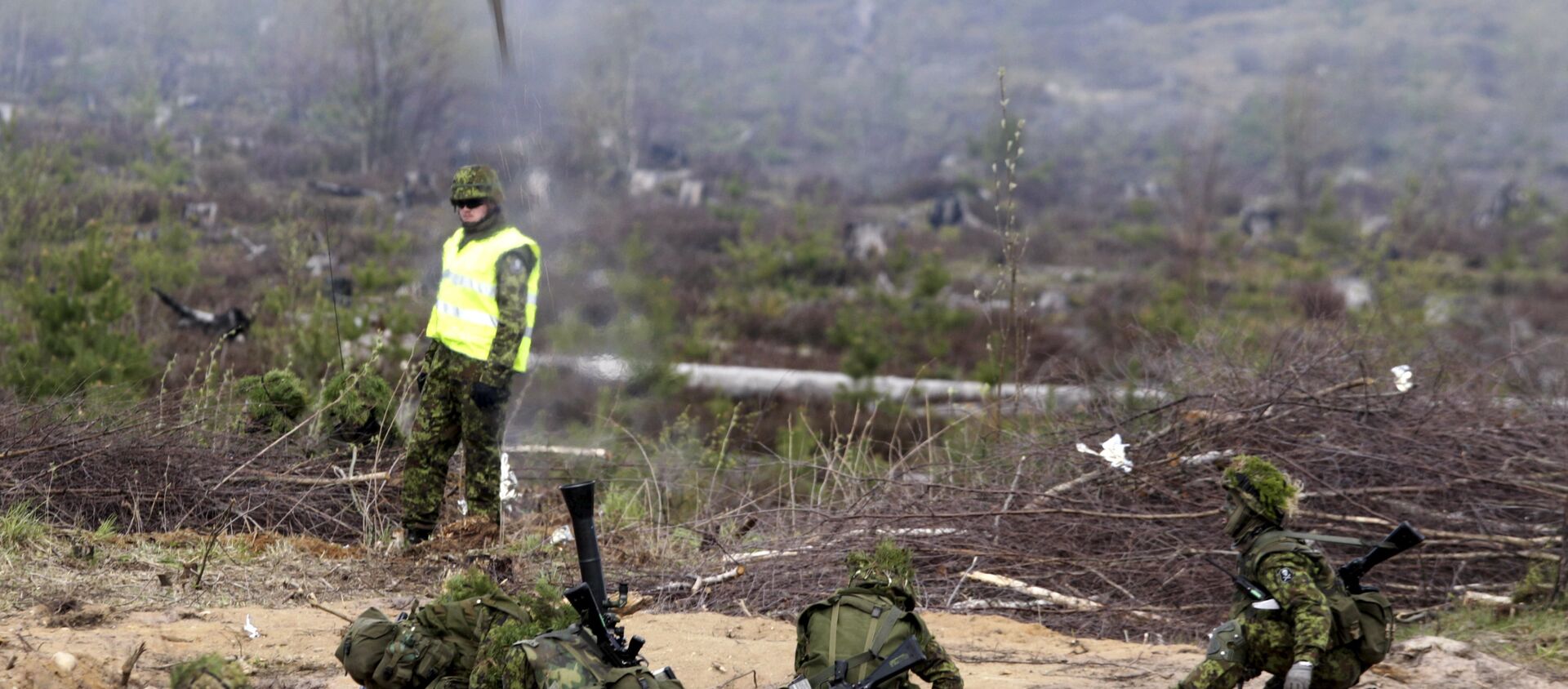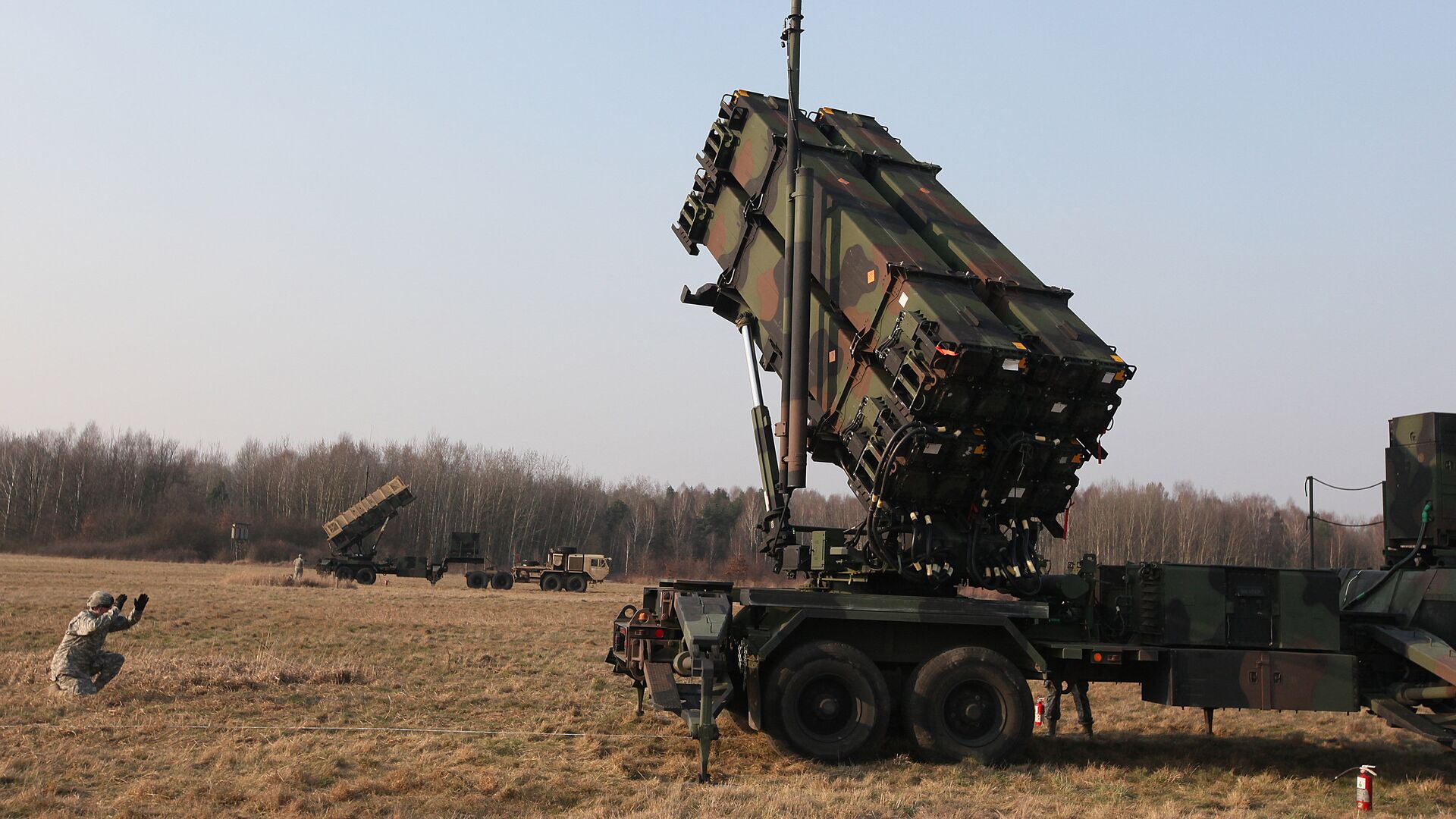https://sputnikglobe.com/20221019/eus-ambitious-air-shield-may-become-its-biggest-money-drain-1102070690.html
EU's Ambitious Air Shield May Become Its Biggest Money Drain, Experts Say
EU's Ambitious Air Shield May Become Its Biggest Money Drain, Experts Say
Sputnik International
BRUSSELS (Sputnik) - Europe’s gargantuan plan to create a new anti-missile shield will allow the United States to siphon off billions of euros in EU taxpayers’... 19.10.2022, Sputnik International
2022-10-19T09:26+0000
2022-10-19T09:26+0000
2023-04-12T17:15+0000
military
air defense
european union (eu)
https://cdn1.img.sputnikglobe.com/img/105533/27/1055332751_0:168:4000:2418_1920x0_80_0_0_62c25a2b33b37f0a3e712c547b0ffbe5.jpg
NATO announced last week that 13 EU nations as well as Norway and the UK had signed up to the German-led European Sky Shield Initiative. German Defense Minister Christine Lambrecht said Berlin would coordinate the procurement of air defense weapons, including US Patriots, German IRIS-Ts and Israeli Arrows.French weapons expert Xavier Moreau, the founder of the Stratpol think-tank that studies geopolitics and political strategy, said the project would fill the coffers of the American defense industry while justifying a massive buildup of American forces as Washington continues to mold its allies into US "aircraft carriers" in Europe.The creation of such an airtight air shield, he said, would involve several echelons and an entirely new structure. It should be able to strike all types of missiles as well as drones at a short, medium and long range, a task that will take years and billions of euros to accomplish.Pierre Henrot, a former high-ranking officer in NATO nuclear artillery, said the shield would be porous without a broader participation of European nations. France and Poland have not signed up to the project, which he said was a "bad start."For detection, the project would require high-performance radar systems to track targets at low, medium and high altitudes. Given the holes in the European coverage, it would be a failure before it comes live, Henrot suggested.For response, it would need long-range interceptors to counter the new generation of Russian hypersonic missiles. This means expanding the network of Patriot systems, which have a very limited range, he estimated.Moreau said the US defense industry had been running an extremely effective propaganda campaign to persuade Europe that Poland or the Baltic countries would be the next stage of a "Russian invasion" after Ukraine. The US has already installed a NATO missile system around Russia and is using the non-existent Russian threat to increase Europe’s military dependence, he added.
https://sputnikglobe.com/20210829/eu-should-provide-baltic-states-with-air-defense-systems-estonian-president-says-1083745637.html
Sputnik International
feedback@sputniknews.com
+74956456601
MIA „Rossiya Segodnya“
2022
Sputnik International
feedback@sputniknews.com
+74956456601
MIA „Rossiya Segodnya“
News
en_EN
Sputnik International
feedback@sputniknews.com
+74956456601
MIA „Rossiya Segodnya“
Sputnik International
feedback@sputniknews.com
+74956456601
MIA „Rossiya Segodnya“
air defense, european union (eu)
air defense, european union (eu)
EU's Ambitious Air Shield May Become Its Biggest Money Drain, Experts Say
09:26 GMT 19.10.2022 (Updated: 17:15 GMT 12.04.2023) BRUSSELS (Sputnik) - Europe’s gargantuan plan to create a new anti-missile shield will allow the United States to siphon off billions of euros in EU taxpayers’ money and expand the network of its military bases on the continent, rather than improving its security, experts warn.
NATO announced last week that 13 EU nations as well as Norway and the UK had signed up to the German-led European Sky Shield Initiative. German Defense Minister Christine Lambrecht said Berlin would coordinate the procurement of air defense weapons, including US Patriots, German IRIS-Ts and Israeli Arrows.
French weapons expert Xavier Moreau, the founder of the Stratpol think-tank that studies geopolitics and political strategy, said the project would fill the coffers of the American defense industry while justifying a massive buildup of American forces as Washington continues to mold its allies into US "aircraft carriers" in Europe.
"It is a way for the American military industry to siphon off European funds as part of such a re-equipment of NATO. Germany has announced that it will devote EUR 100 billion to its military budgets; the United States will have the biggest slice of the pie, no doubt about it," Moreau told Sputnik.
The creation of such an airtight air shield, he said, would involve several echelons and an entirely new structure. It should be able to strike all types of missiles as well as drones at a short, medium and long range, a task that will take years and billions of euros to accomplish.
Pierre Henrot, a former high-ranking officer in NATO nuclear artillery, said the shield would be porous without a broader participation of European nations. France and Poland have not signed up to the project, which he said was a "bad start."

29 August 2021, 11:56 GMT
For detection, the project would require
high-performance radar systems to track targets at low, medium and high altitudes. Given the holes in the European coverage, it would be a failure before it comes live, Henrot suggested.
For response, it would need long-range interceptors to counter the new generation of Russian hypersonic missiles. This means expanding the network of Patriot systems, which have a very limited range, he estimated.
"The number of batteries would have to be multiplied. A battery costs a billion US dollars. Who is going to pay for the hundreds of batteries needed? The EU is out of money ... and a missile costs a million US dollars. I am afraid this project is unpayable in the present circumstances," Henrot said.
Moreau said the US defense industry had been running an extremely effective propaganda campaign to persuade Europe that Poland or the Baltic countries would be the next stage of a "Russian invasion" after Ukraine. The US has already installed a NATO missile system around Russia and is using the non-existent Russian threat to increase Europe’s military dependence, he added.





